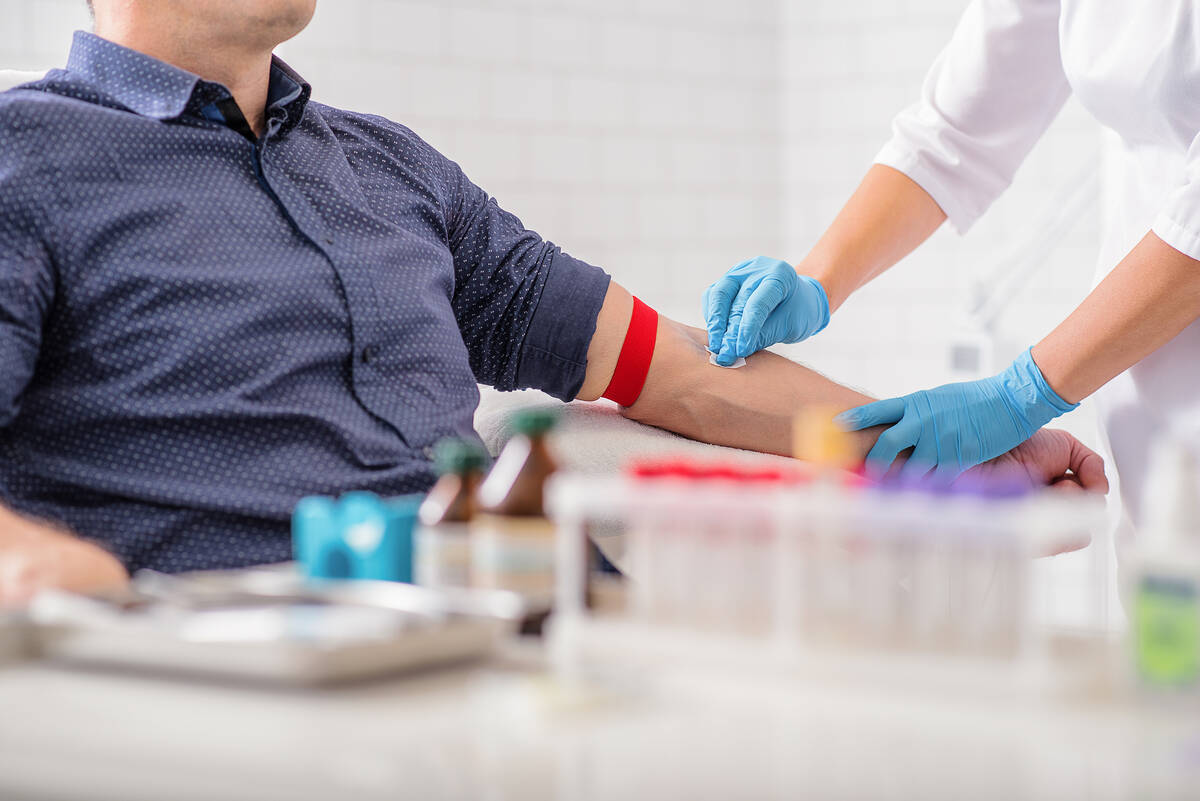Men’s health checklist: 11 annual exams not to neglect
It’s often said that men are the worst when it comes to keeping up with regular medical checkups.
That’s no stereotype, Dr. Andrew Stanton says — just the unvarnished, cold-as-a-stethoscope truth.
It’s not surprising, though. “The vast majority of people don’t like to hear bad news, so why go to a place where you can hear that?” said Stanton, a family practice physician with Southwest Medical Associates, a part of Optum Care.
Also, many men believe it’s their role to appear strong and that seeking out preventive health care could make them look weak, Stanton added.
But none of that excuses men from getting the vital tests, procedures and exams that can help them stay healthy or detect problems before they become more serious.
We asked a handful of area physicians about the medical to-dos that men neglect at their own peril.
A caveat: The guidelines here are only general ones, offered on the basis of age and otherwise good health. Specific tests and procedures may be called for at different ages and circumstances that include family history and other factors.
And the most important thing for any man is finding, and then regularly seeing, a primary care provider.
Blood pressure checks
Simple cuff-on-the-arm blood pressure checks are a good place to begin, simply because we tend to take them for granted. But regular blood pressure checks help detect hypertension, which can lead to such conditions as heart disease, stroke and kidney disease.
“They call it ‘the silent killer’ for a reason,” Stanton said.
While at-home monitors can be a worthwhile investment, regular blood pressure checks at a doctor’s office can help to forestall potential problems up the road.
Blood tests
A doctor or primary care provider may order a comprehensive blood test, which offers a snapshot of how an array of organs and body functions are working. This is likely to include tests for cholesterol and blood sugar as well as dozens of other screenings that will quickly send a layman to Google.
Annual blood tests are often recommended for men 50 and older and every three to five years for men under 50, said Dr. Gregory Schneider, medical director of Roseman Medical Group and a professor at Roseman University College of Medicine, but “every specific blood test has a different guideline.”
Which blood tests are needed and how often may vary from patient to patient depending on such factors as family history and lifestyle. For example, someone with a family history of diabetes or who is overweight might not want to wait until middle age to begin screening for high blood glucose, a possible indicator of diabetes, Schneider said.
Otherwise, he said, “I think it’s reasonable for a person of middle age and beyond to get an annual blood test.”
Cholesterol checks
Often included as part of a blood test is a panel that assesses levels of so-called good and bad cholesterol and triglycerides. These can offer an indication of a higher risk of heart disease and stroke, and possibly the need for cholesterol-lowering medications, diet changes or other interventions.
As with any medical test, the frequency of cholesterol testing will vary from patient to patient. But, in an otherwise healthy, younger adult, it’s reasonable to have a cholesterol screening done every two to three years and more frequently if levels increase over time, according to Dr. Wolfgang Gilliar, dean of Touro University Nevada College of Osteopathic Medicine.
Blood glucose tests
A fasting blood glucose test, included as a set of blood tests called a comprehensive metabolic panel, can measure levels of blood glucose, or blood sugar, that may indicate prediabetes or diabetes.
Diabetes can damage the kidneys and other organs. Stanton said the test can indicate high blood glucose levels while a patient is still asymptomatic.
“Anyone 45 or older, or if they’re overweight, should be screened for diabetes,” Schneider said.
Gilliar recommends a fasting blood glucose test at least once a year, and more often if a patient has a family history of diabetes.
Shingles and other vaccines
Getting an immunization is so common that we barely think of getting one as a medical procedure. But, Schneider said, “immunizations are among the most effective public health tools we have.”
Some shots — tetanus vaccines, for example — require boosters through life. Others come annually, like the flu shot. And some are recommended in later life, such as the shingles vaccine that is administered at age 50.
STD screening
Every sexually healthy male ages 18 to 35 should be screened at least once for HIV and hepatitis C, as well as other sexually transmitted diseases, Stanton said.
Then, men should discuss with their health care providers other or more frequent screenings that might be necessary, based on the patient’s sexual practices, Stanton said.
“There’s not enough information to determine whether we should screen for gonorrhea and chlamydia in all men,” Schneider said. “So, the recommendation is if anybody has high-risk sexual behaviors … that men should have testing.”
Obesity monitoring
Ever notice how just about every visit to a doctor’s office includes stepping on a scale? Obesity is associated with a lot of poor health outcomes, Stanton said, including diabetes and heart disease.
“I’m not a huge fan of BMI,” Stanton said of body mass index, which correlates height and weight alone to create a ranking of body fat. “A bodybuilder is morbidly obese, according to BMI.”
However, the home scale weigh-in is a fair tool to monitor weight changes, and talking to a health care provider about options for losing extra pounds can help promote changes that pay big health dividends.
“There are a number of things you can do, and you can start off slowly,” Stanton said, beginning with a simple walk around the block.
Prostate cancer testing
The incidence of prostate cancer increases with age. If a close relative has had breast cancer, you’re at higher risk for prostate cancer, Gilliar said.
That might merit a PSA — prostate-specific antigen — blood test. However, the merits of routine PSA testing for all men still aren’t conclusive, so it’s best to have a conversation with your doctor, Stanton said.
Right now, the recommendation is that asymptomatic men ages 55 to 69 “should have a conversation with a primary care provider” about testing, Schneider said. “There are some recommendations at age 50, but they’re kind of controversial. So that will be part of the conversation you have.”
Of course, Schneider added, “that’s screening with asymptomatic individuals. When you have symptoms, that’s a little different.”
Skin cancer survey
“We want to make sure, especially in Nevada, everybody gets a good head-to-toe skin check,” Gilliar said.
Skin cancer looks like discolorations, moles or growths, he said, and a thorough check by a health provider can find, and then distinguish, noncancerous from potentially cancerous ones that merit a biopsy.
Checks should be done for men in any age group, Gilliar said, but are particularly important for older men given that skin cancers can take years or even decades to become deadly.
Colorectal cancer screenings
Men are very hesitant to undergo testing for colorectal cancer, Gilliar said, be it in the form of a colonoscopy, a procedure that helps detect potentially cancerous polyps in the colon, or a fecal occult blood test, which detects blood in the stool.
Gilliar recommends that men start with a fecal occult blood test at age 45 and follow up with colonoscopies at 50 to 75, unless family history or other considerations come into play.
Generally, Schneider said, everyone 45 and older should have a screening for colorectal cancer in the form of a fecal occult blood test or a colonoscopy.
However, the recommendation may be different for men with a family history of cancer or symptomatic men.
Scans for smokers
“There are also specific screenings for people who smoke or people who have ever smoked,” Schneider said.
The U.S. Preventive Services Task Force recommends annual low-dose computed tomography lung cancer screenings for adults 50 to 80 who have a 20 pack-year — a pack-year is defined as smoking an average of one pack per day for one year — or more smoking history and who currently smoke or who have quit within the past 15 years.
In addition, Schneider said, men ages 65 to 75 who have smoked 100 or more cigarettes in their lifetime should have a one-time ultrasound screening for abdominal aortic aneurysm.





























